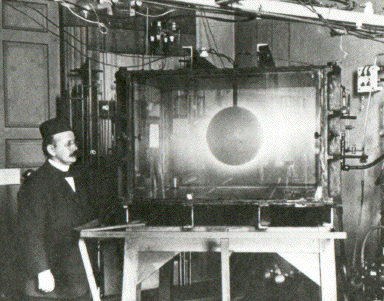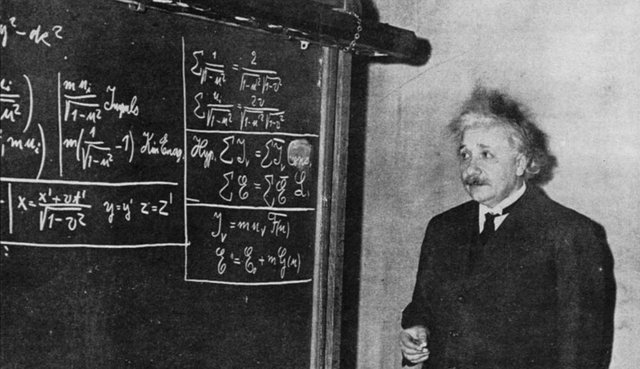Electricity and Consilience. Part 3
See Part 1 here.
See Part 2 here.

Tesla and his coil in action.
By 1900, many brilliant minds had taken taken up Faraday's cause and were making profound discoveries into the nature of electromagnetism. Norwegian scientist, Kristian Birkeland, was reproducing sunspots - regions of intense magnetic activity on the sun's surface - in his laboratory, by applying electricity to a magnetized globe suspended in a vacuum.

Kristian Birkland reproducing a sunspot.
The Serbian genius, Nikola Tesla, was forced to move his lab into the desert, because of the intense electrical discharges he was causing above his New York City home. The leading science journals of the day were full of articles on the promise of electrical research toward explaining the cosmos. Although revolutionary advancement has been achieved in harnessing more utilitarian aspects of electromagnetism, by the 1930's, physics research was following a sharply divergent track. This shift in perspective was brought about largely by a man more familiar to most, Albert Einstein.

In 1905, Einstein developed his theory of special relativity, in an attempt to explain how the comparatively weak force of gravity could seemingly exert such a strong influence on cosmological systems, from galaxies to our own orbit around the sun. To make his ideas workable, he had to invent a new geometry and introduce some strange concepts, such as the bending of space and the inclusion of time as a fourth dimension. Ironically, he was later quite skeptical toward many of his own theories. "Special relativity was the result of 10 years of intellectual struggle, yet Einstein convinced himself it was wrong within two years of publishing it. " In a personal letter, he explained that " I had rejected my theory, even before most physicists had come to accept it" (qtd. in Hoffman). In a letter to a friend, written in 1949, he mused, "There is not a single concept of which I am convinced that it will stand firm, and I feel uncertain whether in general I am on the right track" (qtd. in Smolin). However, despite his misgivings, relativity caught on among the physics community, and more complicated relativistic models began to be proposed. After three hundred years of progressively simplifying the description of the universe, with fewer entities and simpler laws, science suddenly turned toward complexity, while aims of consilience were pushed aside.
I'd read up on the history of Relativity. Einstein deserves credit for his accomplishments, not those of Lorentz, Poincare, Minkowski, Riemann, and Hilbert. Credit for hard work is important.
@pinkspectre please support my blog........
Tesla just needs Frankenstein's monster and his place would be perfect
Good article